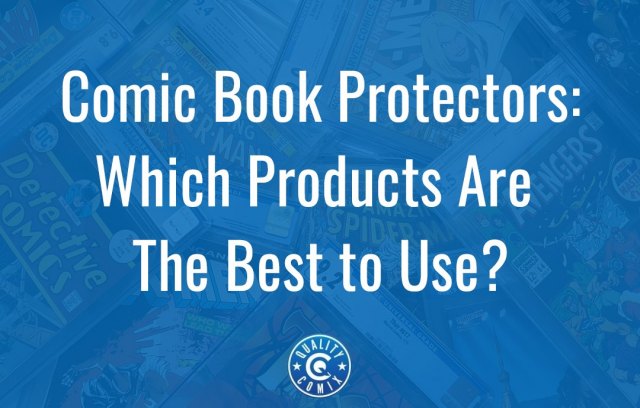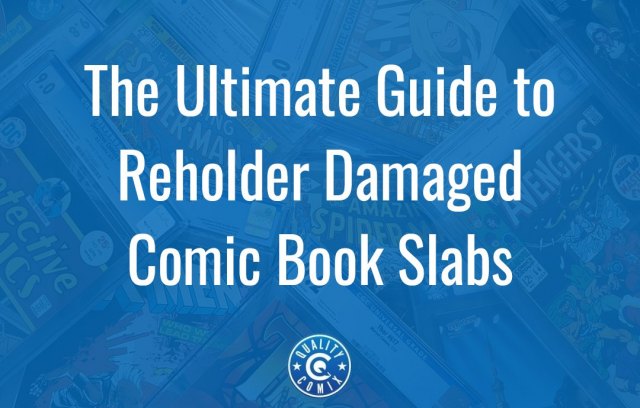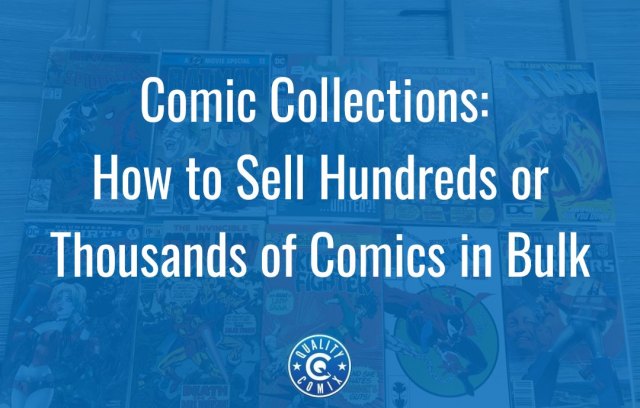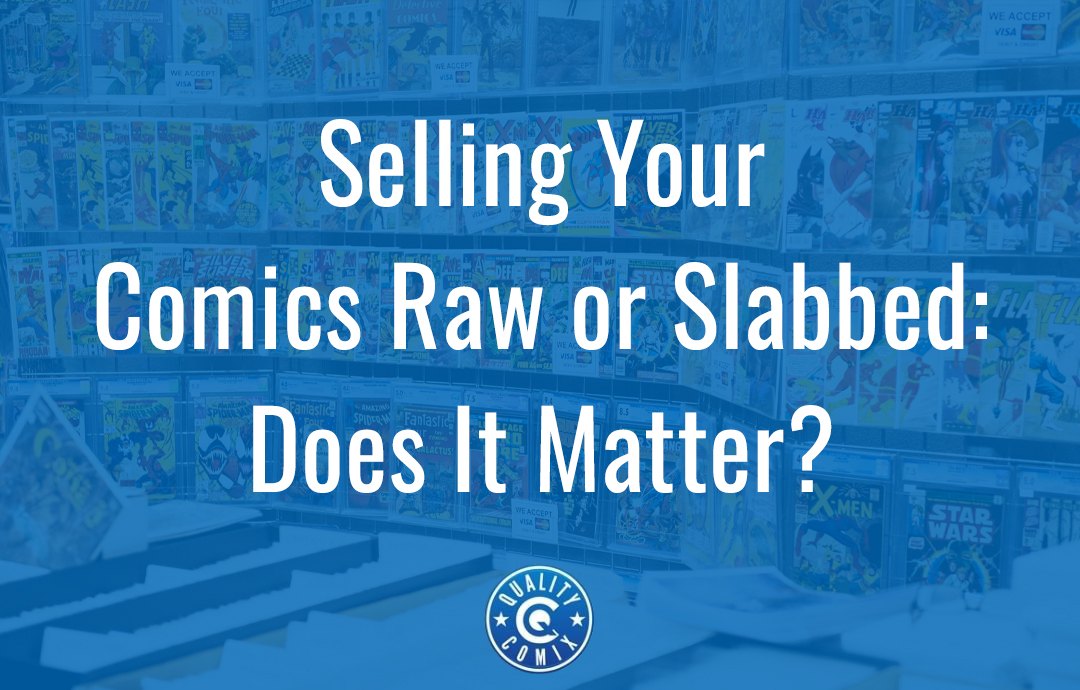
If you have comics to sell, you're probably looking at comparable comics already listed or recently sold to see what kind of prices you can expect. When browsing, you'll likely see comic books stored in different forms, from comics with no protection to bagged-and-boarded books to comics encased in heavy plastic slabs.
What's up with slabs, and is it worth doing if you're selling your own? Will slabbing your comics increase your resell value, or is it best to sell them as-is and save money?
Let's talk about it!
Table of Contents
What is Slabbing?
Slabbing a comic is the act of encasing the comic in plastic. More importantly, those comics are sealed in plastic and protected from the elements. The plastic is UV resistant, and the complete seal prevents moisture or the elements from getting in and damaging your comic. It's essentially a way to "freeze" the comic in time, maintaining its quality for as long as possible.
Slabbing can technically be done yourself with the proper materials and tools. However, self-slabbed comics aren't going to sell for any premium. If anything, they might be worth less than a raw comic because people will wonder why it's slabbed without the accompanying grade.
That's right; grade.
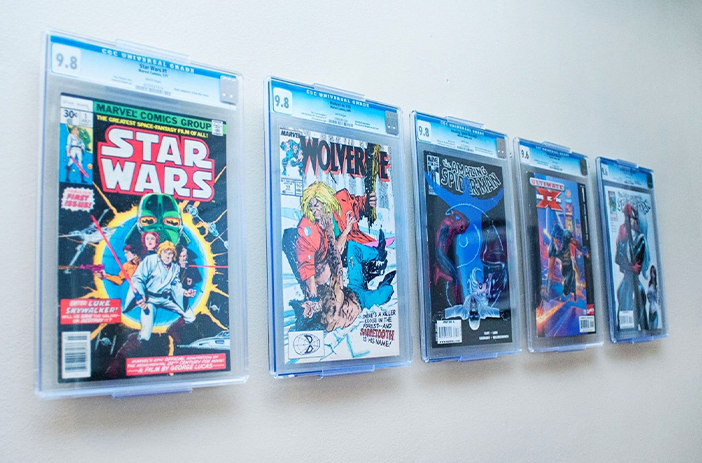
Comics are slabbed because they are sent to one of the leading grading authorities. These companies examine the comic through several different lenses and assign a numerical grade assessing the quality and condition of the comic, which can include cover gloss, page quality, and overall condition. Once the comic is graded, it is sealed in a tamper-proof rigid plastic holder with a serial number and barcode for authentication. A high grade means a cleaner, better condition comic, with the highest grades only available to pristine comics.
Does Slabbing a Comic Affect Value?
The obvious question that comes to mind is whether or not getting a comic slabbed (and graded) affects the value of the comic.
The answer is yes, of course. Slabbed comics are almost always more valuable than the comic's unslabbed counterparts.
Slabbed comics are frozen in stasis for the entire selling, shipping, and delivery process, and they're certified to be in a specific condition. That means their value is largely "fixed" in the market, with always variance for market conditions.
Does slabbing always increase the value of a comic? Most of the time, yes, but there may be edge cases where a slab doesn't increase the value of a comic for you. In particular, relatively low-value comics are not worth slabbing and grading.
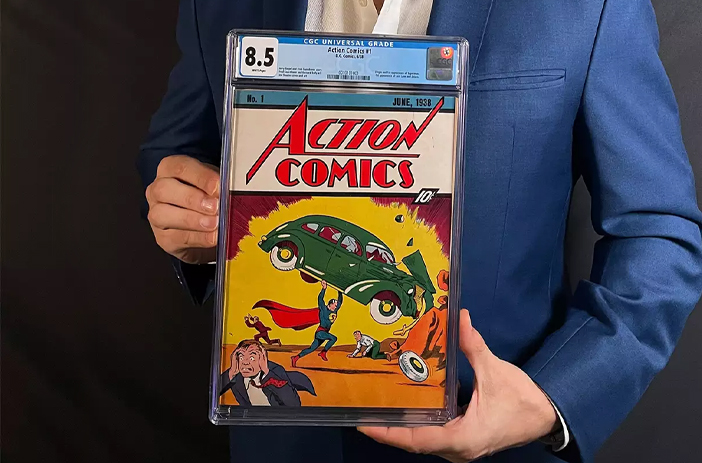
The problem is not that the slabbed copy doesn't increase in value. It does. The issue is that a slabbed copy needs something extremely noteworthy for low-value and mass-market comics to make it even sellable. Art or signatures (graders can verify the authenticity), especially from now-deceased artists, writers, or other personages, can make slabbing even a low-value comic worthwhile. On the other hand, getting the latest issue of Gwenpool slabbed means you likely won't find anyone who cares enough about it to buy it that way.
Raw comics offer buyers various benefits, such as the ability to inspect them more closely or to see the cover art in all its glory. However, raw comics can be at greater risk of damage due to their lack of protection. Additionally, some buyers may be wary of buying comics that are not professionally graded or authenticated.
No matter what route you choose, the important thing is to do your research and ensure you get the best deal possible. Selling your comics raw or slabbed will depend on what works best for you and the buyer.
What Are the Benefits of Slabbing a Comic?
Slabbing as a process can be beneficial for several reasons.
You know the condition of the comic, as officially certified by an organization like CGC or CBCS, and you know it will be that condition indefinitely. First and foremost, a slab is exceptionally protective. It takes a lot of effort to damage a comic inside a slab, and casual everyday wear, sunlight exposure, or spills won't damage it.
Slabs also have a more defined, consistent value to them. If you have an issue with something graded CGC 9.4, you can look up other copies of that, see their value at recent auctions, and know with certainty that yours is worth that amount. It might take some time to sell the comic for that value, but there are other reasons to have an assigned value. The given value is also helpful for things like insurance purposes, both shipping insurance, and collection insurance.
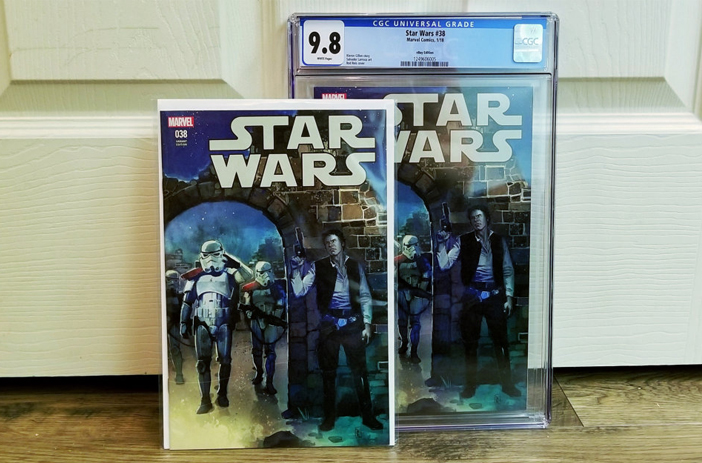
And, of course, slabs can increase the value of a comic. More than that, they also remove bickering about the condition of a comic. If you think a comic is near-mint and sell it raw to someone, it could arrive in worse condition. Or, it could come in the same state, but the person who bought it might disagree with your quality assessment. Either way, a slab has a third-party authority backing the judgment of the comic's condition.
What Are the Drawbacks of Slabbing a Comic?
Slabbing is not without its drawbacks.
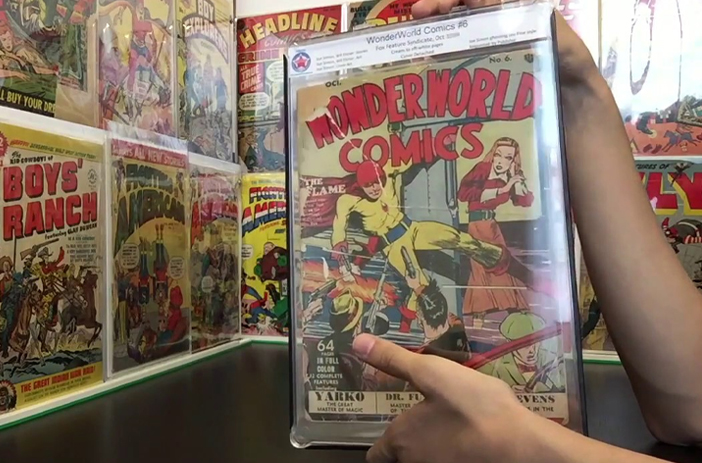
Some of those drawbacks are obvious. For example:
- You can't read a comic once it has been slabbed because removing it from the slab defeats the purpose. You'll have to have a second reading copy, read it digitally, or just not read it.
- Additionally, slabs are bulkier and more difficult to store, sort, and dig through than raw comics in bags and boards. This phenomenon is why most collectors only slab their highest-value comic books; it's often not worth it to slab less valuable issues.
- Shipping a slabbed comic tends to be more expensive. You want insurance and often certified delivery to ensure the comic arrives, or the shipping carrier can reimburse you for damage or loss during transit.
- At the same time, slabs are bulkier and heavier than raw comics, so you can't ship them as easily.
- Another significant issue is the cost and time involved in slabbing comics. You need to send the comic books to a grading authority, who will process them (and clean them - if you paid for the service), grade them, slab them, and return them. The trouble is, this process can take several months and cost at least $25 per comic.
- Finally, you may have to struggle a bit to sell slabbed comics. Not every comic collector wants slabbed comics (and many can't afford the higher-priced slabs), so your potential buyers are more limited.
Popular comics, characters, and issues can still sell quickly, but other comics might take a while before turning over.
Doing the Math
Is it worth slabbing your comics? There's no firm answer to this. You simply need to do the math.
If you have ten comics, each worth $100, that's $1,000 in comics.
If you slab all 10 of them, and the value of each is $250 when slabbed, that's $2,500 in value.
Considering that it costs $25 or so per comic to grade them, plus a $5 handling fee for your order, you're looking at $255 in fees at a minimum. You're down to $2,250 or so, which is still a significant increase in profit over the raw version.
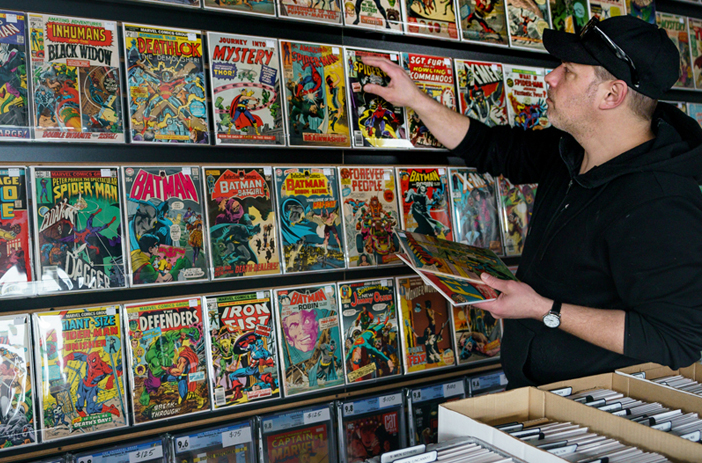
You also have to consider shipping fees, both in shipping the comics to a grading company in the first place and in shipping the slabbed comics to your buyer later. This cost eats up another portion of your profits.
Insurance on the packages is more.
Plus, if you end up selling each of those ten comics to different buyers, you're paying shipping individually rather than all at once, adding to the expense.
You'll still probably come out ahead, but it might not feel like it at the time. It's also more time, work, and effort to list and sell your slabbed comics after getting them than selling raw comics.
The Two Extremes
Two extreme ends of comic value are outliers in this discussion.
The first is uniquely high-value comics. A comic worth, say, $50,000 raw could be worth $250,000 slabbed in high condition.
All of the highest-value comics are slabbed because they're rare and valuable, and slabbing them helps preserve them from further damage or degradation over time.
It's (pretty much) always worth getting high-value comics slabbed. The more valuable comic books are, the more critical it is to protect them adequately. CGC and the other grading companies even have priority grading services for more valuable comics, for a faster turnaround time.
Selling a high-value slabbed comic can take a while because there are comparatively few people with the interest and budget to buy them. That's why it's such a big event in the comics world when a seven-figures sale occurs; they're still quite rare! Of course, if you have a comic worth that much, you already know you should have it slabbed if it's not already encapsulated and protected. Any slight mishap can ruin it beyond repair.
There's never a reason not to slab a high-value comic, in our experience, other than saving money. What specifically that threshold is for high value depends on you, but the higher the price, the more likely you should slab it.
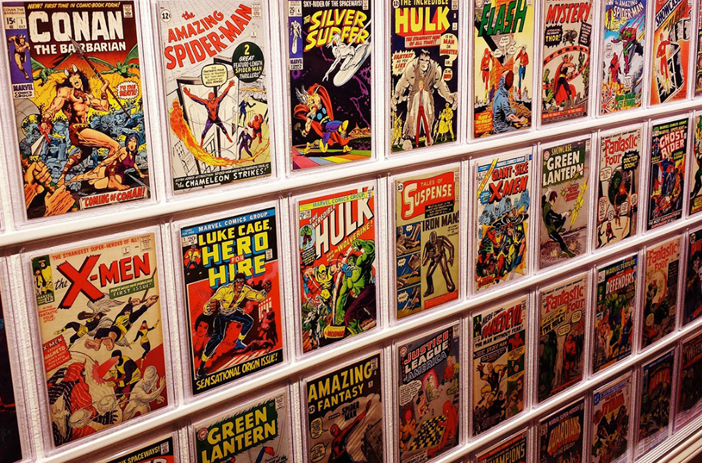
What about the other side of the coin? Should comics be slabbed if they are only worth a dollar in the dollar bins?
Chances are, probably not.
Technically, slabbing a low-value comic book increases its value. But, there are a few issues with this.
First off, companies like CGC often don't even want to waste their time grading and slabbing low-value books. It takes time to process them, and while they'll be more than happy to take your money, they won't prioritize a dollar bin book.
Often, even a slabbed copy isn't worth that much more. A $1 comic, which costs $40 after fees and shipping to slab, leaves you at -$39; you have to sell that $1 comic for at least $40 to break even, let alone turn a profit. How many people are willing to buy a slabbed version of a comic book for $50 or more when they could pop down to their local comic store and buy a copy for $1? Not many.
The only good reason to slab comics in this value range is when there's a reason why they wouldn't be in that value range. The two biggest reasons are verified alterations (rare misprints, artist or writer signatures, variant covers that are worth more, and so forth) and if the entire collection is a pedigree collection.
Chances are, you need a pedigree collection. There are less than a hundred recognized pedigree collections in the world to date. If you think you might be the owner of a pedigree collection, you can always call CGC and ask, but it's relatively unlikely that you are.
Wrapping Up
So, let's bring things back to the original discussion.
You have comics to sell.
You can sell them for their current market value. Or, you can pay to get them slabbed and sell the slabbed versions. Slabbed versions have an up-front cost to getting them slabbed, cost more for shipping, and have a smaller audience of buyers. But, the profits can be much higher than raw comics.
Raw comics, conversely, sell faster, for less, and don't have as many up-front fees for handling (shipping is essentially the only one.)
Does slabbing matter?
Yes, of course. Slabbing almost always increases the value of a comic, if there's enough interest in the comic to sell it. If there isn't enough interest, the slab doesn't add much unless interest springs up down the line.
There's nothing wrong with selling raw comics. The only potential issue is that a raw comic doesn't have a grade attached, so there can be some disputes over the condition of the comics and, thus, their value. You can use photos and other evidence to back up any claims you make, though, and you should be fine.

Essentially, it boils down to this:
- If your comics aren't very valuable, slabbing won't be worth the time, expense, and effort.
- If your comics are moderately valuable, slabbing can increase their value and the time it takes them to sell. This practice is fine for people who have the luxury of time to maximize value but worse for people who need to sell off a collection faster.
- If your comics are very valuable (or old, or exceptional in some way), then slabbing them is worthwhile. Protecting them alone is worth the expense, and the increase in value is highly worth it.
Whatever the case, we highly encourage you to reach out to us for advice. Just drop us a line, and we'll be happy to help! We do everything from appraising collections and estimating grades to selling comics directly.

